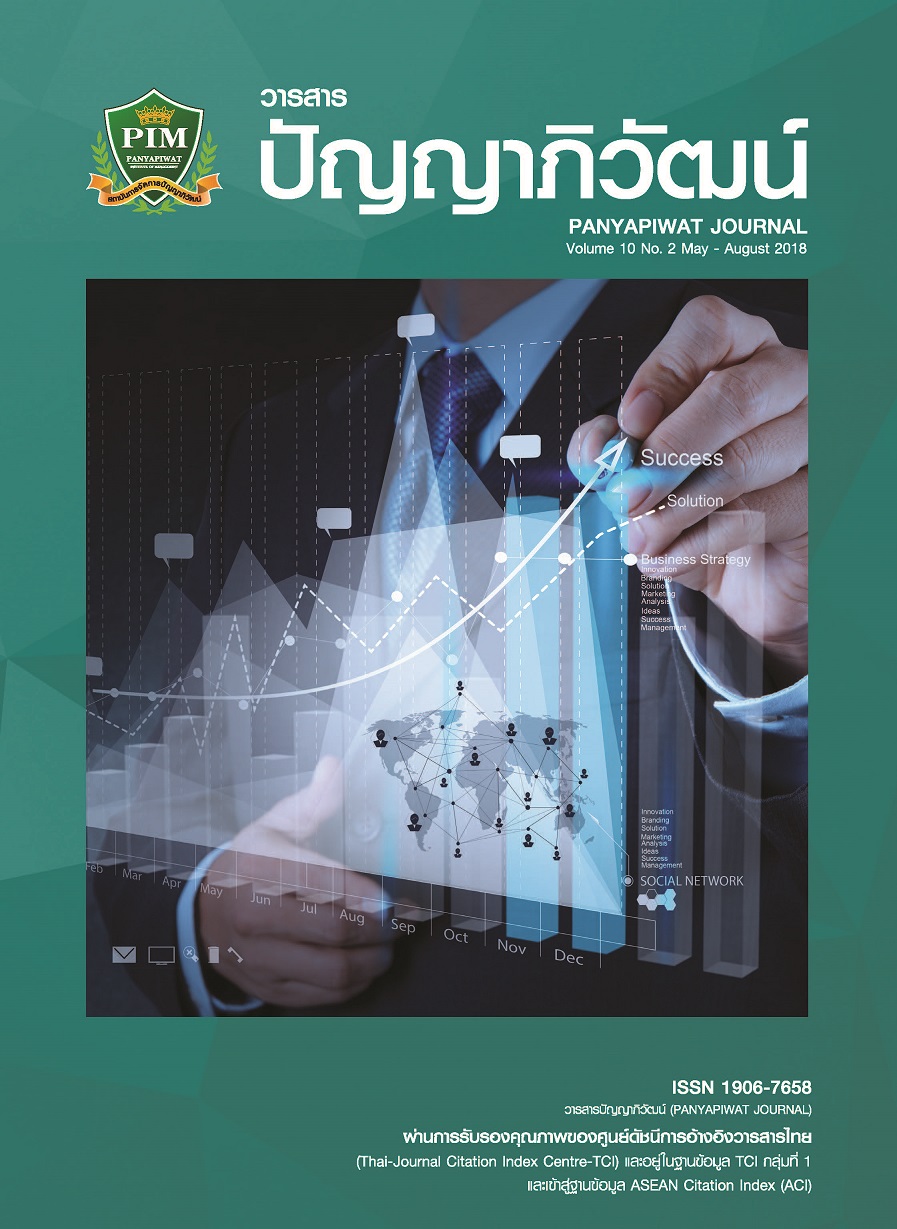DIGITAL AGE’S CUSTOMER JOURNEY, A NEW MARKETING QUEST
Main Article Content
Abstract
Today’s customer journey is immensely affected by technological changes. As a result, brand touch point also changes congruently. A customer journey begins with pre-purchasing, during-purchasing, and post-purchasing of product or service which comprises six steps including awareness, consideration, preference, purchase, loyalty, and advocacy. A key instrument used to identify a customer journey is known as the customer journey map. A business employs the instrument to create an in-depth analysis of customer’s opinion, demand, and behavior. The result of an analysis is constructed as a map of customer journey to explain the relationship between customers and the brand touch point. The derived insights can be used to plan a better marketing strategy to satisfy the target customers and effectively manage their experiences.
Article Details
I and co-author(s) certify that articles of this proposal had not yet been published and is not in the process of publication in journals or other published sources. I and co-author accept the rules of the manuscript consideration. Both agree that the editors have the right to consider and make recommendations to the appropriate source. With this rights offering articles that have been published to Panyapiwat Institute of Management. If there is a claim of copyright infringement on the part of the text or graphics that appear in the article. I and co-author(s) agree on sole responsibility.
References
Alves, R., Lim, V., Niforatos, E., Chen, M., Karapanos, E. & Nunes, N. J. (2012). Augmenting Customer Journey Maps with quantitative empirical data: a case on EEG and eye tracking. arXiv preprint arXiv:1209.3155.
Ayanso, A. (2015). Business and Technology Trends in Social CRM. In Handbook of Research on Managing and Influencing Consumer Behavior (pp. 295-309). IGI Global.
Edelman, D. C. (2010). Branding in the digital age. Harvard business review, 88(12), 62-69.
Electronic Transactions Development Agency. (2017). E-Commerce Survey in Thailand 2017. Bangkok: Ministry of Digital Economy and Society.
Flom, J. (2011). The Value of Customer Journey Maps: A UX Designer’s Personal Journey. Retrieved March 9, 2013, from https://www.uxmatters.com/mt/archives/2011/09/the-value-of-customer-journey-maps-a-ux-designers-personal-journey.php
G-Able. (2018). What is Customer Journey? Retrieved February 2, 2018, from https://www.g-able.com/thinking/customer-journey/
Gonring, M. P. (2008). Customer loyalty and employee engagement: an alignment for value. Journal of Business Strategy, 29(4), 29-40.
Greene, M., Riley, E., Card, D., Mitskaviets, I., Bowen, E. & Wise, J. (2009). Justifying social marketing spending. Forrester Research.
Howard, D. & Kerin, R. (2013). A surname brand effect explanation for consumer brand preference and advocacy. Journal of Product & Brand Management, 22(5/6), 362-370.
Jacobs, J. A., Klein, S., Holland, C. P. & Benning, M. (2018). Online Search Behavior in the Air Travel Market: Reconsidering the Consideration Set and Customer Journey Concepts. In Proceedings of the 50th Hawaii International Conference on System Sciences.
Kandampully, J., Zhang, T. & Bilgihan, A. (2015). Customer loyalty: a review and future directions with a special focus on the hospitality industry. International Journal of Contemporary Hospitality Management, 27(3), 379-414.
Khan, M. T. (2013). Customers loyalty: Concept & definition (a review). International Journal of Information, Business and Management, 5(3), 168.
Laroche, M., Habibi, M. R. & Richard, M. O. (2013). To be or not to be in social media: How brand loyalty is affected by social media? International Journal of Information Management, 33(1), 76-82.
Lemon, K. N. & Verhoef, P. C. (2016). Understanding customer experience throughout the customer journey. Journal of Marketing, 80(6), 69-96.
Temkin, B. D. (2010). Mapping the Customer Journey. Forrester Research.
Venkatesan, R., Petersen, J. A. & Guissoni, L. (2018). Measuring and Managing Customer Engagement Value through the Customer Journey. In Customer Engagement Marketing (pp. 53-74). Palgrave Macmillan, Cham.
Vivek, S. D., Beatty, S. E. & Morgan, R. M. (2012). Customer engagement: Exploring customer relationships beyond purchase. Journal of marketing theory and practice, 20(2), 122-146.
Webster, G. B. & Hume, M. (2016). Analysing the Role of Social Media in Dialogue Marketing and Management a Contemporary Franchising Local Area Marketing Technique. Competitive Social Media Marketing Strategies, 20.


